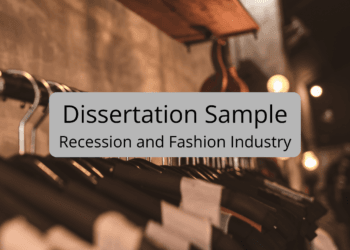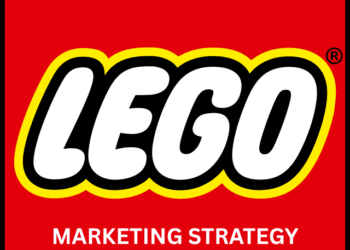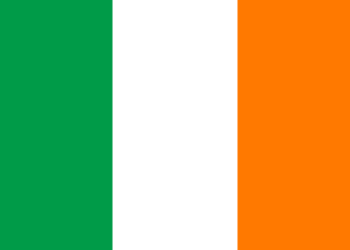Marketing Assignment Help: How to Market a Sustainable Fashion Brand
- 15 October 2024
- Posted by: OAH
- Category: Business & Management
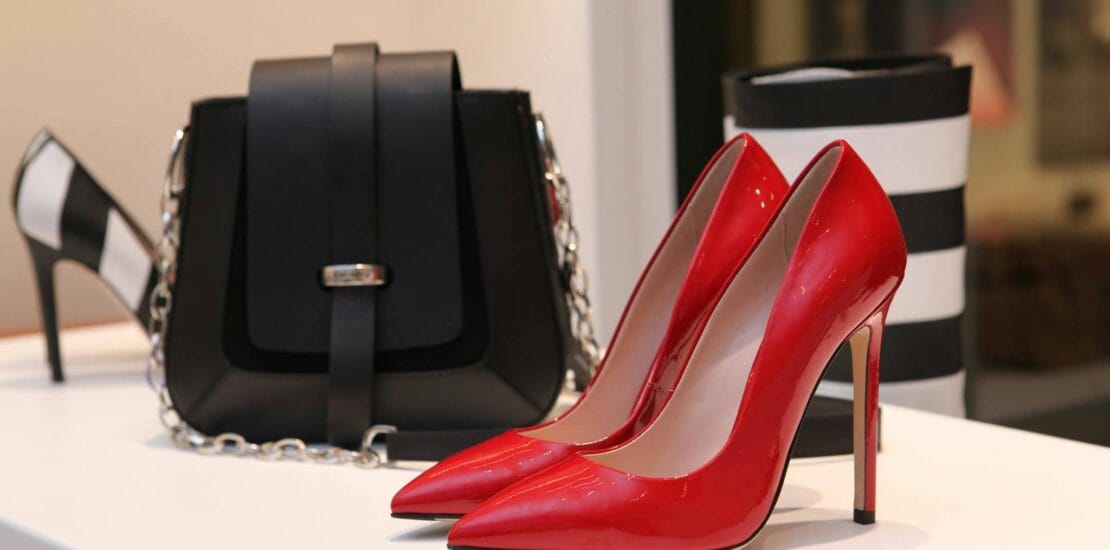
This is a sample market plan assignment on how to market a sustainable fashion brand, focusing on eco-friendly marketing strategies, targeting ethical consumers, and utilizing digital marketing for promotion. The assignment covers a complete marketing plan for a sustainable fashion brand and marketing tactics usually taught in marketing courses like – brand positioning, pricing, situation analysis, targeting, positioning, strategy, etc.
This marketing assignment will help you understand different marketing topics with a relevant practical example and will also help you understand the high-quality marketing assignment help that we provide.
Need Marketing Assignment Help? Contact us now!
Sustainable Fashion Marketing Plan: Strategies for Ethical Consumer Engagement
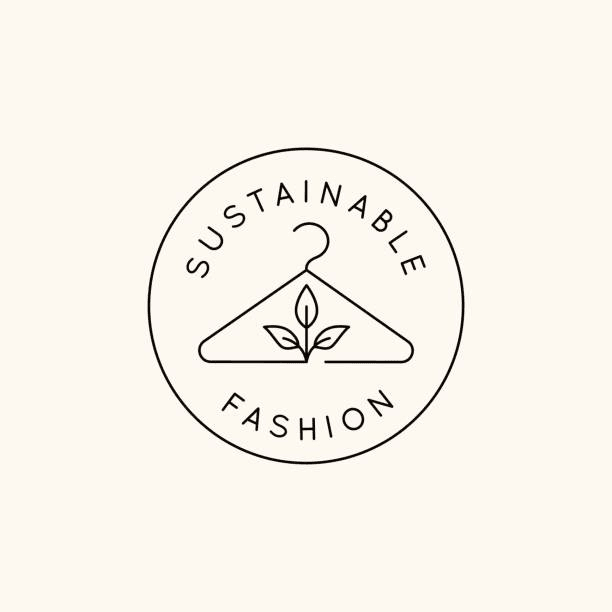
Executive Summary
Sustainable Fashion is a new fashion brand that is trying to change the contemporary fashion business for the better by offering eco-friendly, ethical, and transparent products. Appreciating the environmental and social issues that conventional fashion processes present, Sustainable Fashion aims to minimize its environmental footprint. This is quite evident in the incorporation of materials such as organic cotton and their high level of concern in reducing wastage by incorporating recycled products and most importantly having their products manufactured by companies that pay reasonable wages to their employees. The product range of the brand consists of clothes and accessories produced from organic, recycled, and low-impact materials, which meet the conditions of quality and style with references to the principles of sustainability and ethical production. Sustainable Fashion is not simply a brand, but a new era of consuming, an invitation for people to change the way they think about the clothes they buy. Sustainable Fashion believes responsibly and sustainably to bring the change in the fashion industry for the better and provide the consumer with a chance to make the change happen. This way the brand not only solves the problem connected with the negative impact of conventional fashion on the environment but also becomes the new reference point for the industry that proposes cooperation with people’s moral and ethical requests for the sustainable products of the fashion industry.
Note: To understand what is a marketing plan? Check this: What Is A Marketing Plan? – 9 Steps To Create One
MARKET PLAN ASSIGNMENT HELP: SUSTAINABLE FASHION BRAND
Table of Contents
1. Introduction
As the world is gradually getting sensitized to the need to protect the environment and practice ethical consumerism, here comes Sustainable Fashion, a brand that seeks to revolutionize the fashion industry. Noticing the increasing problems caused by current fashion processes, Sustainable Fashion focuses on changing the fashion industry for the better through the promotion of sustainable, transparent, and ethical principles (Niinimäki & Hassi, 2011). Sustainable Fashion is not just a brand, but an evolving culture that takes a step further toward being responsible for what one wears. It is our policy to reduce the environmental impact and carbon footprint through our use of sustainable and eco-friendly fabrics and reducing wastage through recycled fabrics and the use of fair trade labor. The assortment is designed as clothes and accessories produced from organic, recycled, and low-impact materials; in other words, each product corresponds to the established standards of fashionable and high-quality clothing as well as corresponds to the principles of eco-friendliness and social justice (Joy et al., 2012).
1.1.Vision, Mission, and Objectives
1.1.1 Vision:
Sustainable Fashion’s mission is to point out the direction for the fashion industry to change the world through clothes and make sure that every piece of clothing made has a positive impact on the world. Our goal is to become the ‘must have’ brand for the conscious consumer who is concerned with her ecological impact and the conditions of the workers, and establish new benchmarks for the fashion industry in this regard (Fletcher, 2014).
1.1.2 Mission:
We shall have a noble aim of creating quality, good-looking apparel and accessories from sustainable fabrics and anyhow. There is a firm commitment to creating environmentally friendly clothes and supporting fair labor practices worldwide while ensuring that we provide our customers with relevant information and building trust (Niinimäki & Hassi, 2011).
1.1.3 Objectives:
They include the following; Emphasis on the Environment, Emphasis on Society, Emphasis on Disclosure, and Emphasis on innovation. Our major emphases include waste reduction, use of renewable materials, payment of fair wages and social compliance through providing safe working conditions for employees, and regular research regarding more sound and effective sustainable strategies (Joy et al., 2012).
2. Marketing Audit
A marketing audit enables Sustainable Fashion – the brand – to ensure that it has aligned its marketing strategy to the overall business strategy; the audit also assists the brand in realizing how it has to behave in the contemporary market, how it has to progress the trends that may be beneficial to the brand, and how it is capable of avoiding the trends that may be hazardous to its successful growth. It also helps in elaborating on further strategies that would continue the growth rates and increase the position of the brand on the market while contributing to the fine-tuning of existing promotional campaigns.
2.1 Situational Analysis
Sustainable Fashion is uniquely placed in the growth segment for such green and ethical consumers. Fortunately for the brand, going green has become popular in the current society, and the brand offers apparel and accessories made out of green material. The current Marketing Strategy focuses on the value proposition of being honest, sourcing from sustainable places, and pointing at a decreasing ecological impact. However, the brand is still in the product growth life cycle and at this moment has problems with the geographic reach of the market, the consumers’ need for sustainable fashion, and differentiating itself from other companies that boast a similar slogan.
2.2 Competitive Landscape
The competition is already stiff especially in Sustainable Fashion mainly because many organizations are trying to embrace the sustainable and ethical fashion niche. Everlane, Patagonia, and others are the main competitors of the company, although there are new market entrants. Such competitors have much deeper pockets and better and well-developed supply and other supporting infrastructure than the new-aged firm which improves marketing clout in the market. But unlike its competitors, Sustainable Fashion loudly declares that it is fashionable, high-quality, and obsessively sustainable. The brand requires constantly evolving and qualifying its offering to the consumers to negotiate the competition in this segment.
2.3 Social-Cultural Trends
Ethical consumerism, environmental awareness, and the slow fashion ‘movement’ have responded positively to Sustainable Fashion and have provided it with a rather fertile ‘ground’. Climate change and equality are some of the factors that have seen many people, especially youngsters’ willing to pay a little more for eco-products. These tendencies are supported by the constantly deepening integration of social media platforms into the consumption processes as customers start to choose brands that are aligned with their values. These trends represent excellent opportunities for Sustainable Fashion because its marketing strategy is in line with the principles of the organization: concerns such as transparency, sustainable production, and the ethical labor involved in making them.
2.4 Technical Issues
Nevertheless, contemporary consumers’ awareness of more sustainable fashion has been increasing, and that is why there are main technical difficulties that refer to the production and supply system. Specifically, the procurement of environmentally friendly materials may be relatively expensive and, therefore, involves working with suppliers who meet the required specifications of the environmental policy. Further, the production of such fabrics is even more time-consuming and not easily replicable like the conventional fabrication systems. For Sustainable Fashion to eliminate the above challenges, it has to embrace technology and innovation, which will allow for making sustainable products that are affordable and readily available in the market.
2.5 Economic Issues
The market forces are involved in the development of the Sustainable Fashion market one of which is the economy. In terms of sustainability, the costs can be somewhat higher in terms of the material as well as the ethical issues for labor which in turn may affect the price and returns on investments. What this means in a market where the consumer is usually conscious of the price, particularly during challenging economic periods is a challenge. But with consumers hence becoming more inclined to pay that almost extra dollar for an item that is sustainably produced, there could indeed be the likelihood of Sustainable Fashion justifying those rather big prices through brand appeal and showing how consumers would indeed get their value out of those pieces in the future. With this due respect, the innovation of the concept of a ‘green economy’ has shown positive economic indicators for such brands in various corners of the world.
2.6 Issues & Opportunity Analysis
Market factors play a significant role in the formation of the Sustainable Fashion market and one of the types is economic factors. In the case of sustainable material and ethical labor, they are more expensive which will affect the price and perhaps the return on investment. What this means in a market where the consumer is often conscious of the price point, particularly when the economy is tough is a puzzle. Still, noting that consumers have hence become willing to pay a premium for sustainably produced goods, it might be possible for Sustainable Fashion to rationalize those super high prices by appealing to brand image and then explaining to customers that they would indeed receive utility in those pieces in the long run. In addition, with the introduction of the concept of a ‘green economy’, such brands have observed positive economic effects in different parts of the world.
3. Marketing Objectives
3.1 Marketing Strategy
The marketing strategy of a sustainable fashion company has to be the creation of a market niche where Sustainable Fashion can become a market leader in the niche by demonstrating that the company is truly committed to sustainable fashion by using environment-friendly production standards, sourcing materials from ethical sources, and being transparent with its consumers. In this context, the goals of the brand reflect the desire to create a powerful consumer’ following based on the recognition of the brand’s similar values and supports, thus targeting active and conscious consumers, who care about sustainable quality, the environment, and people’s rights. The strategy is concerned with positioning the brand as unique from the other players through creating unique products, telling a compelling narrative of the benefits that would be derived from the company’s practices, and effective leveraging of the internet. To this end, Sustainable Fashion is also expected to broaden its customer base through cooperation with selected opinion leaders, using the principles of sustainable fashion to attract customer attention through various informative internet campaigns.
3.2. STP Analysis
3.2.1 Segmentation:
Sustainable Fashion divides its market into demographic variables, psychographic variables, and behavior variables. The key target markets are the buyers concerned with environmental issues, the millennials interested in ethical products, as well as the individuals who appreciate fashionable ones. The brand also appeals to such specialty groups as fair-trade consumers and those who have an interest in locally produced and masterpiece products.
3.2.2 Targeting:
Its targeting strategy is the precise identification of environmentally and socially aware clients who are more than willing to spend on high-quality sustainable fashion. Such as middle to upper-income earners who are always concerned with sustainable products, and those living in the urban areas thus can spread the word orally to their circles.
3.2.3 Positioning:
Thus, Sustainable Fashion targets being positioned as the brand that will provide consumers with not only stylish and durable clothing, but with the experience that would allow being more responsible and make a Change for the Better. The brand’s positioning statement could be Slogan: Sustainable Fashion: Realising the fashion of the future. Make responsible decisions for your wardrobe.

3.3 Marketing Mix
3.3.1 Price
As for the price policy, Sustainable Fashion fixes a premium price for the products as all of them are made from high-quality, eco-friendly materials. This pricing, therefore, has to be supported on grounds that organic material is used in the product, products are made through fair trading practices, and the products’ brand policy whereby environmental degradation is frowned upon. Price is slightly higher than standard fashion brands, but it stands for materials’ quality and durability, delivered under the Sustainable Fashion brand, encouraging the consumer to think of the product as an investment. It has also employed some promotional options like bundled products, loyalty pricing, and sometimes promotional pricing to make it easier for as many people as possible to be able to afford the brand while still maintaining the high-end brand image.
Pricing in Sustainable Fashion is critical in defining the company brand since it is strategic to market positioning and conveys sustainability quality. The premium pricing not only costs superior quality and green materials but also ethical labor which provides all employees engaged in the production fair wages and a safe working environment (Niinimäki & Hassi, 2011). The above pricing strategy is an apt reflection of the culture of ethical buying as customers today are frequently willing to pay significant amounts of money for products that reflect their values of ecological and social responsibility (Joergens, 2006). Currently, Sustainable Fashion markets its products at a high price since its target clientele is the minority that will purchase a product as a way of funding sustainability.
Also, Sustainable Fashion targets using a pricing technique that realigns the customers’ perception from the fact that the goods are not perishable items. Due to the high quality and durability of materials used in the production of Sustainable Fashion’s products, the customer is not only paying for the item’s use in the present but, also for durability and environmentally-consciousness of the clothes he or she is buying. This ties in with the slow fashion concepts that support the slow acquisition of items that are of better quality and cost the environment less than fast fashion products (Fletcher, 2010). Considering the focus on product lifespan instead of product quantity, Sustainable Fashion should be able to explain its higher price and attract consumers who are interested in both the quality and sustainability aspects of textiles.
3.3.2 Place
The distribution strategy aims at a direct distribution of Sustainable Fashion products and cooperation with selected stores and brands that share similar values. The primary place of sale is the brand’s internet shop, where customers can be communicated directly and where a large number of products are offered. Furthermore, Sustainable Fashion intends to be stocked in some independent physical stores that sell Fairtrade and environmental clothing to consumers to get a touch of the brand. The brand also continues scaling up a physically available store and reach by considering pop-up stores and environmental store partnerships.
The place strategy of Sustainable Fashion is also concerned with the distribution of products directly through their website whereby the company also partners with relevant retail stores that embrace sustainability and ethical standards of production. The brand could use the Internet to advertise itself to potential consumers, especially to key stores that concentrate on the niche Fairtrade and eco-friendly products (Beard, 2008). These collaborations are selected specifically in terms of the physical atmosphere of the locations acquired by the retail so that the clients of Sustainable Fashion recall the requisite of quality and sustainability as they shop. It also enables the brand to capture the market of the users who are particular about the physical aspect of products before they buy, hence covering the largest market reach and thus making the brand more popular in the market.
However, it can also be mentioned that pop-up and temporary stores as the directions developed by Sustainable Fashion also belong to the strategic approaches to distribution. Pop-up stores are effective because they expose customers in other geographic locations to the brand therefore creating awareness of its products (Pomodoro, 2013). These pop-up stores can be placed in urban centers, for specific kinds of occasions, or in conjunction with other environmentally friendly brands, which offer the customers a full brand encounter that cannot be offered through online portals. Furthermore, pop-up stores create opportunities for new geographic market experimentation and for obtaining significant feedback from customers that may be useful in future extensions of product offerings and distribution strategies (de Lassus & Anido Freire, 2014). By using these boundaries and changing formats in its distribution plan, Sustainable Fashion not only enlarges the customer base but also enhances the bond of commitment with eager green buyers.
3.3.3 Promotion
The Main thrust of Promotion for Sustainable Fashion involves establishing awareness of sustainable activities and other ethically appropriate actions supported by the brand. The promotional activity will consist of digital marketing, social media marketing, and influencer campaigns, as well as paid content marketing focused on the stories of the materials, from their sourcing to the production of the final product. It also uses cause-related marketing where the company aligns its marketing message with environmental and social causes to support. Here, the three key tactics proposed by the company are based on transparency within the production process as well as the storytelling approach within the Sustainable Fashion Framework, the goal is to develop the so-called ‘emotional connection’ with the customers so that these would become the loyal brand advocates that make others understand why Sustainable Fashion is worth supporting.
The strategy employed for the promotion of Sustainable Fashion is to go for the heart of the target consumers by using storytelling and being authentic in communications on social media. Such a performance is one of the tactics of the content marketing approach, which is based on disclosing how each item was procured sustainably to ethical manufacturing of the product. Speaking of the functionalities of Sustainable Fashion, Pulizzi stated that the group can drive the change in consumer behavior by making them aware of the consequences they have on the environment through interesting stories that are associated with the brand’s commitment to operate under sustainable frameworks. This content is posted on the blog, social media, and the brand’s website so that the message is out there and is appealing to the good people who care about the environment.
Apart from content marketing, the major method of promotion applied at Sustainable Fashion is influencer marketing. Therefore, by orchestrating cooperation with the boosters of the sustainable and ethical lifestyle, the brand will be able to appeal to the existing groups of consumers and, thus, gain more credibility within the market (De Veirman et al., 2017). These people will act as credible sources that can relay the message that the brand wishes to convey to its target market and also present in their daily lives some objects that embody the essence of the brand. Reflecting on the use of influencer marketing, it is also possible to observe that Sustainable Fashion can reach new target audiences, those individuals who are going to carefully contemplate the meanings of environment and ethical production.
Another important constituent of the promotion plan of Sustainable Fashion is cause-related promotional campaigns. Moreover, besides referring to EM and SM to orient the marketing communication campaign, not only good for the brand image (Balmer, 2011; Capri & Castaldo, 2012; c-; Cha & Kim, 2010; de Bergerac & Morrin, 2007; Dawson, 2008; Farn, 2010; Fionda & accomplished Theoretic, That is why Sustainable Fashion may interfere with environmental or fair trade non-commercial organizations and launch combined appeals for ethical purchase. As well as informing the public on the matters that concern them, they promote the Sustainable Fashion brand as the one that is making the change. It is thus easier for the company or brand in question to mobilize people to become part of cause-related branding since the methodology slots the company or brand with causes dear to prospective customers and ones they genuinely care for.
4. Marketing Implementation
The marketing strategy’s implementation towards the approach of Sustainable Fashion will involve the following to apply the company’s principles of sustainability, transparency, and appropriate production processes. First of all, the brand will become more active in the Internet sphere and intensify its promotion using digital marketing. As for the online promotion, specific use of Instagram, Facebook, and Pinterest will be made to create specific stories involving the process of making each product from sourcing environmentally friendly materials to completing the product. Moreover, cooperation with opinion leaders and influencers who step up for the environmental and ethical aspects of the fashion industry would be critical for audience targeting. These partnerships will assist in re-establishing the brand and give it credibility among the audience of conscious shoppers.
On the same note, Sustainable Fashion will diversify its channels of distribution through affiliated physical stores that have similar ethics and through pop-up stores in strategic major cities. The above strategy ensures that the consumers get to interact with the products to have a better association with the products and the goal of the brand. The new sales model will stay with a strong focus on direct selling via the Internet, which is a unique online store carrying a vast array of the brand’s products and exclusive collections produced under the principles of quality and sustainability. Further, the brand will search for a partnership with environmental NGOs to base promotions of the clothing brand on causes dear to the target population, thus staying loyal to the principle of sustainable clothing production.
Therefore, to achieve proper customer relations and proper brand image, Sustainable Fashion will periodically create content that pushes the message that consumers have to be conscious of their fashion consumption impacts on the environment and society. A lot of this will be in the form of a blog, vlogs, and tutorials on why sustainable fashion matters and how it can be implemented. The brand will also establish patronage using loyalty schemes, referrals, and discounts on products for patrons of the brand’s upcoming releases. Thus, the approach that has been chosen by Sustainable Fashion is to not only attract the client again and again but to mobilize them to encourage others to also go for this brand and support its causes. The following is a specific implementation plan that would put Sustainable Fashion at the forefront of the fashion industry as what it aims to be – an authority for ethical and sustainable fashion.
5. Marketing Control
Marketing control plays an important role in the successful implementation of strategies within Sustainable Fashion to achieve the desired results. This encompasses the act of assessing the marketing activities and results against certain marked targets in a bid to identify areas that require correction or improvement. In the following section, a summary of the monetary, strategic, and operative controls that Sustainable Fashion will employ to accomplish its marketing goals is presented.
Financial control is another important aspect of the marketing plan and organization ensures that all marketing activities of Sustainable Fashion do not surpass the budget. Marketing expense plan: A clear marketing Expense plan for social media marketing will be prepared to show the likely expenses to be incurred on specific activities including, advertising, partnership with key influencers, content creation, promotion, and event promotions amongst others as recommended by Kotler & Keller (2016) In this way, any implementation difference in total amounts can be subject to early detection, and necessary methods of correction can be applied. Some of the financial measures that will be considered include; the return on investment (ROI), cost acquired to attain a customer (CAC), and lifetime value of a customer (LTV) to determine the efficiency of employed marketing communication activities (Lovelock & Wirtz, 2016). Thus, for example, if the ROI of the convention of social media campaigns is significantly lower than anticipated, then the company may have to adjust its content placements or target market. Monthly marketing KPI reports will also allow for checking the effectiveness of financial investments in marketing and the impact of marketing on the financial situation of the company (Morioka et al., 2019).
Strategic control is the fact of coordination of the hereby marketing activities of Sustainable Fashion with the general business development strategy and objectives. This means conducting a periodic assessment of the company’s marketing plan with a simple view of having to know if the changes on the ground require the company to change its marketed strategy due to factors such as changes in the market and customers and new entrants into the market among others forces (Walker & Mullins, 2014). To be in a position to counter any changes that may occur in the market, SWOT will be conducted at some intervals to assess the market (Hill & Westbrook, 1997). For example, changes in customers’ needs and wants towards earth-sensitive products can be a threat to Sustainable Fashion in a way that the latter may deem it useful to expand product range or enter new niches. On the other hand, another threat can be the appearance of new entrants that create similar value offers hence creating pressure to either realign or fortify the value offers. The message of the products to be marketed in the market needs to be uniform to portray the company’s stand on issues to do with sustainability, transparency, and the ethical way of doing things (Belz & Peattie, 2012).
An operational control retains the day-to-day activities as well as the activities in the marketing plan and measures to follow to ensure that the activities are done as required. This involves highlighting goals of accomplishment for every type of marketing that is to be conducted over the Internet, for example, the level of interaction, number of visitors, conversion proportions, and customer feedback (Jobber & Ellis-Chadwick, 2019). For example, if the number of visits to its website is low compared to the expected number, then the company may need to re-strategize on SEO or embark on website advertisements. The second source of information will also be the customers where survey interviews will be conducted to determine their level of satisfaction or lack of the same on the products or services consumers receive or how they are being treated (Kotler et al., 2019).
6. References:
Adamkiewicz, J., Kochańska, E., Adamkiewicz, I. and Łukasik, R.M., 2022. Greenwashing and sustainable fashion industry. Current Opinion in Green and Sustainable Chemistry, 38, p.100710.
Puspita, H. and Chae, H., 2021. An explorative study and comparison between companies’ and customers’ perspectives in the sustainable fashion industry. Journal of Global Fashion Marketing, 12(2), pp.133-145.
Mukendi, A., Davies, I., Glozer, S., and McDonagh, P., 2020. Sustainable fashion: current and future research directions. European Journal of Marketing, 54(11), pp.2873-2909.
Pucker, K.P., 2022. The myth of sustainable fashion. Harvard Business Review, 13, p.2022.
Ikram, M., 2022. Transition toward green economy: Technological Innovation’s role in the fashion industry. Current Opinion in Green and Sustainable Chemistry, 37, p.100657.
Kim, Y. and Oh, K.W., 2020. Which consumer associations can build a sustainable fashion brand image? Evidence from fast fashion brands. Sustainability, 12(5), p.1703.
Tran, K., Nguyen, T., Tran, Y., Nguyen, A., Luu, K. and Nguyen, Y., 2022. Eco-friendly fashion among generation Z: Mixed-methods study on price value image, customer fulfillment, and pro-environmental behavior. PLOS ONE, 17(8), p.e0272789.
Blasi, S., Brigato, L. and Sedita, S.R., 2020. Eco-friendliness and fashion perceptual attributes of fashion brands: An analysis of consumers’ perceptions based on Twitter data mining. Journal of Cleaner Production, 244, p.118701.


